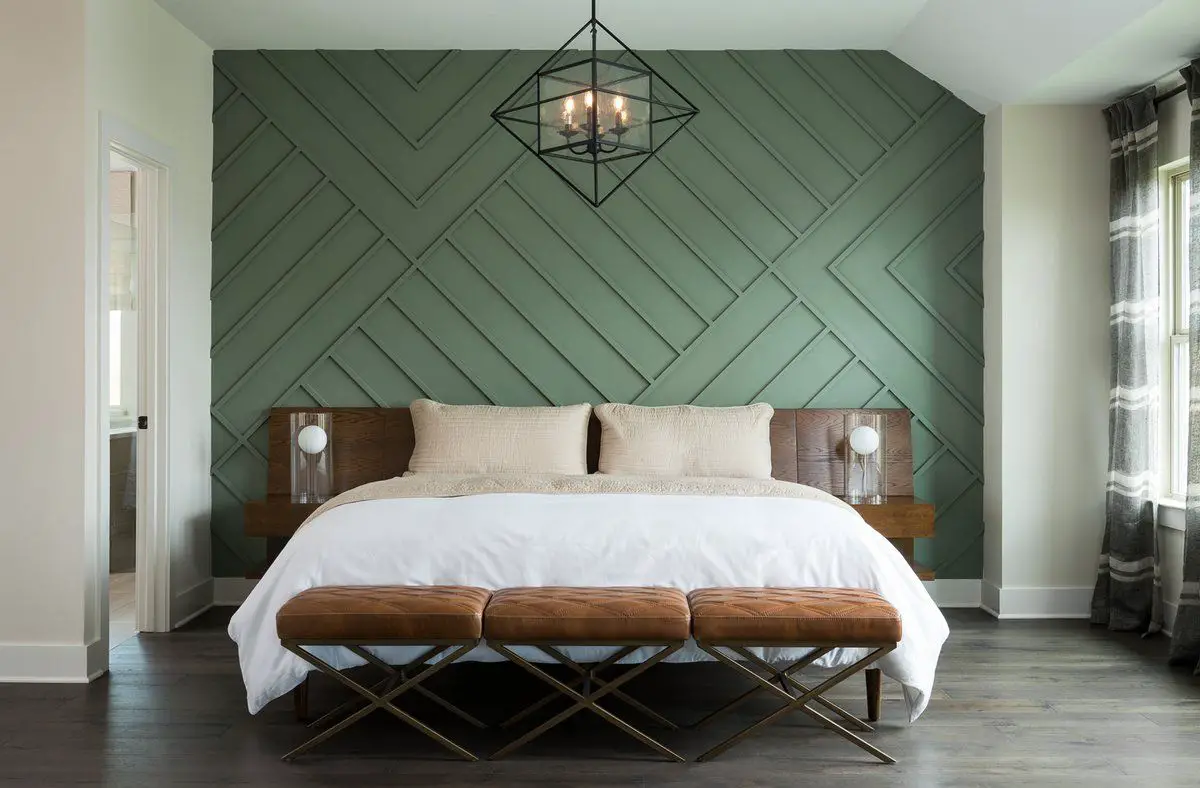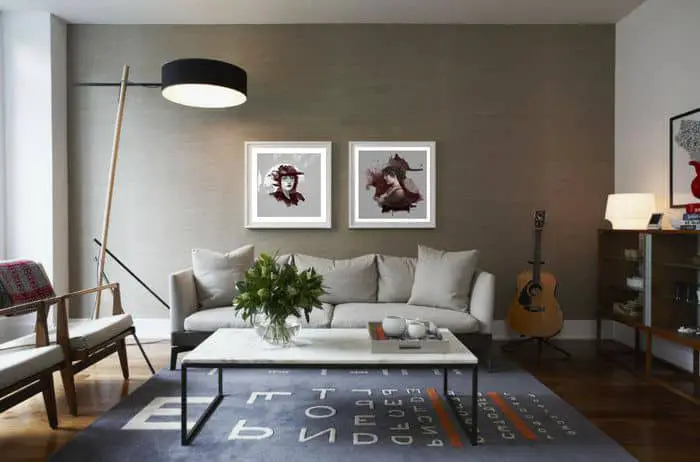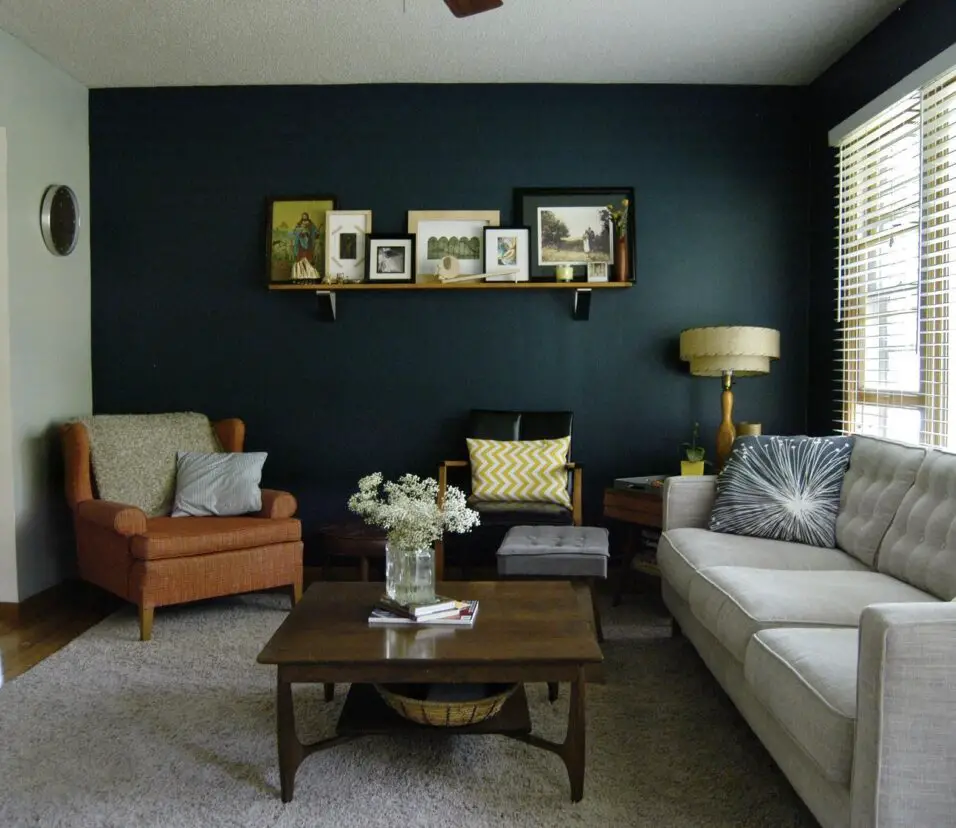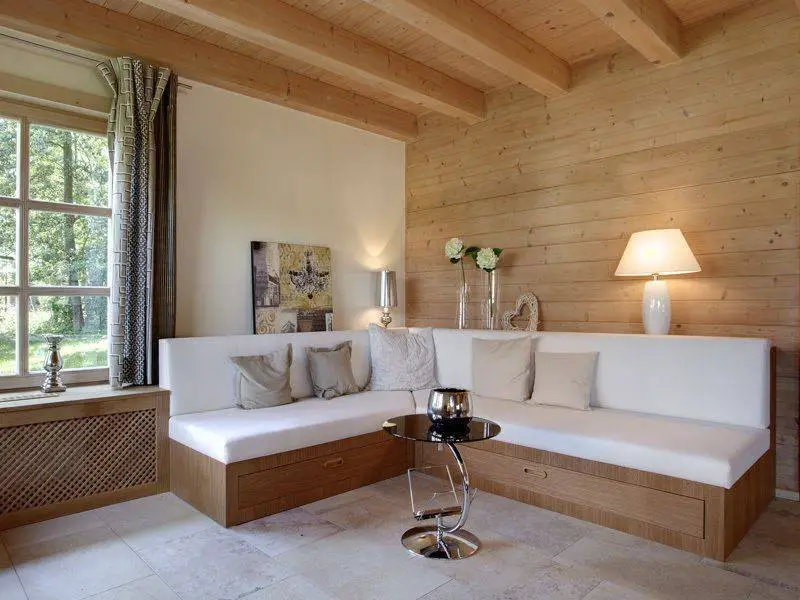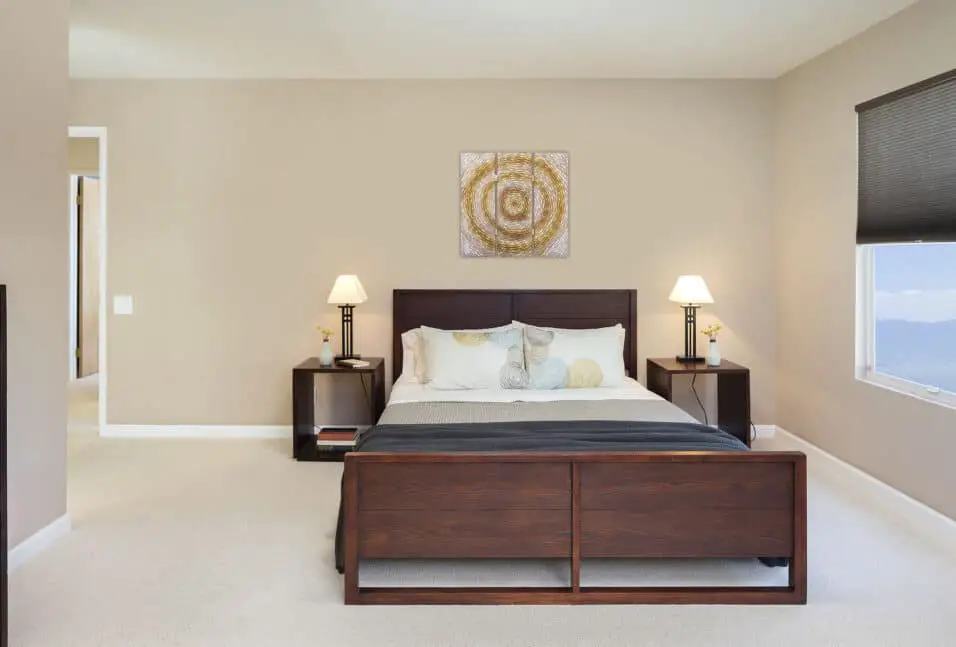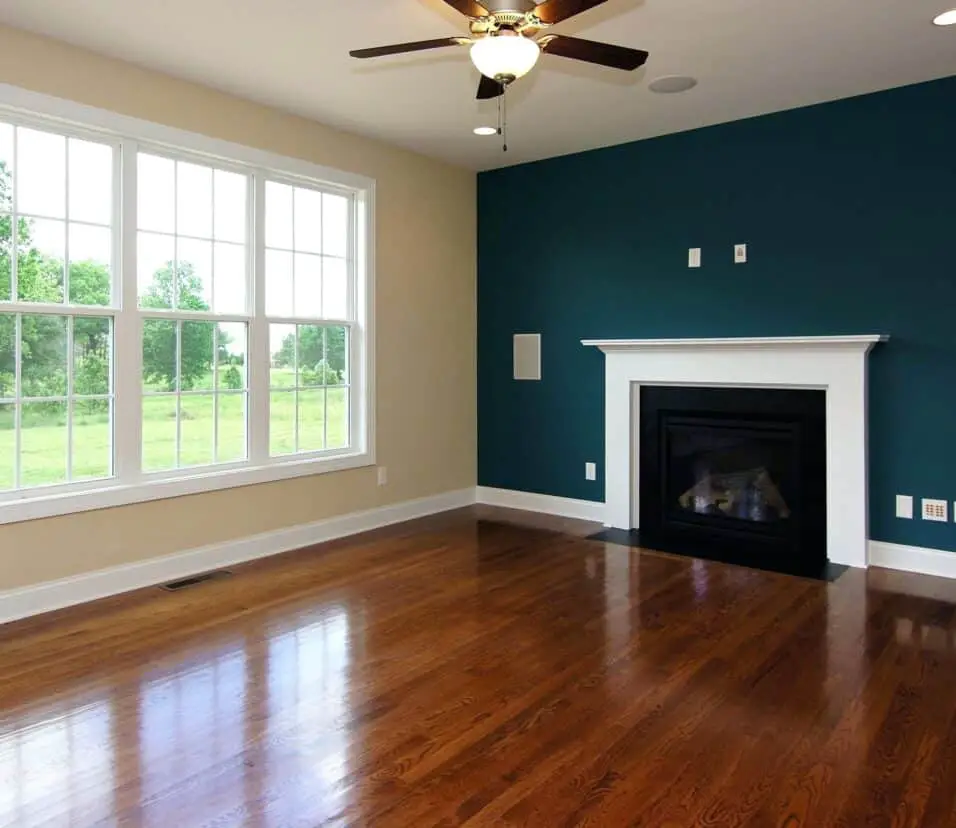Which Wall Should Be The Accent Wall In A Bedroom
Introduction
Which Wall Should Be The Accent Wall In A Bedroom: When selecting an accent wall, it is crucial to consider the existing elements in the bedroom and how they interact with each other. The accent wall should complement the overall color scheme and style of the room, rather than overpowering or clashing with the surrounding walls and furniture. By creating a sense of balance and harmony, the accent wall can elevate the room’s visual appeal and create a cohesive and inviting atmosphere.
One approach to achieving balance is to choose the wall that naturally draws attention. This could be the wall behind the bed, as it is often the focal point of the room. By accentuating this wall, you can create a stunning backdrop for the bed and make it the centerpiece of the bedroom. Additionally, consider the architectural features of the room, such as windows, doors, or a fireplace. These elements can guide your decision, as accentuating them can enhance their visual impact and create a harmonious flow within the space.
Color plays a vital role in setting the mood and ambiance of a bedroom. When choosing an accent wall, consider the color palette you wish to incorporate. Bold and vibrant colors can add energy and drama to the room, while softer and muted tones create a calming and serene atmosphere. Take into account the natural light in the room, as it can affect how colors appear. If the room receives ample natural light, you can opt for darker shades without making the space feel cramped. Conversely, if the room lacks natural light, lighter colors can help create an illusion of brightness and openness.
Texture is another element to consider when selecting an accent wall. Incorporating textured materials, such as reclaimed wood, exposed brick, or wallpaper with a tactile pattern, can add depth and visual interest to the room. The texture of the accent wall should complement the overall design scheme and provide a contrast to the other walls, creating a visually appealing focal point.
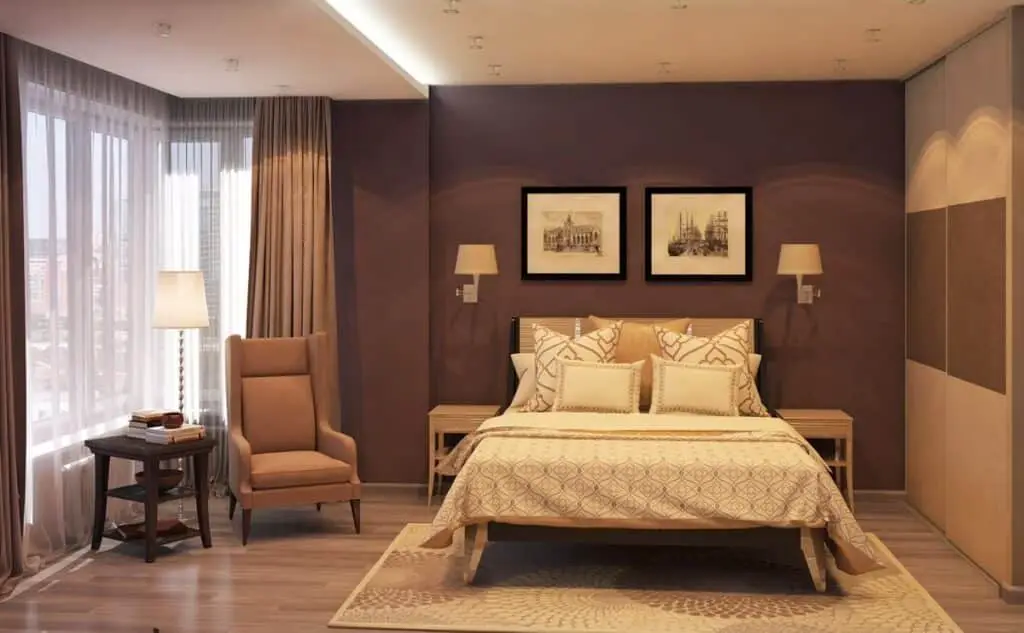
Where should accent walls go in bedroom?
For example, in your bedroom, the main accent wall is most likely the wall behind your bed’s headboard. That’s not always the case, though! If your bedroom has a wall of windows, that can also be a great place to design an accent wall that will highlight this architectural feature.
Introduction:
When it comes to designing a bedroom, accent walls can be a great way to add visual interest and create a focal point in the space. However, deciding where to place an accent wall in a bedroom can be a bit tricky. The location of the accent wall can greatly impact the overall look and feel of the room. In this article, we will explore some key considerations to help you determine the best placement for accent walls in a bedroom.
Consider the Bed Wall:
One of the most common and effective placements for an accent wall in a bedroom is the wall behind the bed. This wall naturally draws attention as it is typically the largest and most prominent surface in the room. By adding an accent wall behind the bed, you can create a stunning backdrop for your headboard and make the bed the focal point of the room. This placement works particularly well in bedrooms with a symmetrical layout, as it helps to balance the space.
Highlight Architectural Features:
If your bedroom has any unique architectural features, such as a fireplace. A bay window, or a built-in bookshelf, consider placing the accent wall to highlight these elements. By doing so, you can draw attention to the architectural details and create a cohesive and visually appealing design. For example, if you have a beautiful bay window, placing an accent wall behind it can help frame the view and make it a standout feature in the room.
Create a Visual Balance:
Another important factor to consider when deciding on the placement of an accent wall is the overall balance of the room. If your bedroom has asymmetrical features or an uneven layout, placing the accent wall on the opposite side can help create a sense of visual balance. This can help bring harmony to the space and prevent it from feeling lopsided or disjointed. Additionally, consider the color and pattern of the accent wall in relation to the rest of the room to ensure a cohesive and balanced design.
The placement of accent walls in a bedroom can greatly impact the overall design and feel of the space. By considering factors such as the bed wall, highlighting architectural features, and creating visual balance. You can determine the best location for an accent wall in your bedroom. Remember to choose colors and patterns that complement the rest of the room to create a cohesive and visually appealing design. With careful consideration and planning, an accent wall can transform your bedroom into a stylish and inviting sanctuary.
Should accent wall in bedroom be behind bed?
An accent wall doesn’t have to be the traditional behind the bed focal feature. You can use any wall of your room, including the ceiling for a chic accent that draws in your attention and adds visual interest to your space.
Introduction:
An accent wall in a bedroom can add a touch of style and personality to the space. It serves as a focal point and can enhance the overall aesthetic appeal of the room. However, deciding where to place the accent wall requires careful consideration. One common question that arises is whether the accent wall should be positioned behind the bed. In this article, we will explore the advantages and disadvantages of having an accent wall behind the bed in a bedroom.
Advantages of having an accent wall behind the bed:
Placing the accent wall behind the bed can create a visually striking and dramatic effect. It draws attention to the bed, which is often the centerpiece of the bedroom. By highlighting this area, the accent wall can make the bed feel more inviting and luxurious. Additionally, it can serve as a backdrop for decorative elements such as artwork, mirrors, or shelves, further enhancing the overall aesthetic appeal of the space.
Moreover, having an accent wall behind the bed can help define the sleeping area within the room. It can create a sense of separation and make the bed feel like a cozy retreat. This can be particularly beneficial in open-concept bedrooms or studio apartments where there are no physical barriers between different areas. The accent wall acts as a visual boundary, providing a sense of privacy and intimacy.
Disadvantages of having an accent wall behind the bed:
While there are several advantages to having an accent wall behind the bed. There are also some potential drawbacks to consider. One concern is that the accent wall may compete with other elements in the room. Such as a headboard or statement furniture. If these elements already serve as focal points. Adding an accent wall behind the bed could create a cluttered or overwhelming look.
Another consideration is the size and layout of the bedroom. In smaller rooms, placing the accent wall behind the bed may make the space feel cramped or visually unbalanced. It is important to assess the proportions of the room and determine whether the accent wall will complement or overpower the overall design. Additionally, the position of windows, doors, and other architectural features should be taken into account when deciding on the placement of the accent wall.
Whether the accent wall should be positioned behind the bed in a bedroom depends on various factors such as personal preference, room size, and overall design goals. It is essential to carefully evaluate the advantages and disadvantages before making a decision. By considering these factors, you can create a visually appealing and harmonious bedroom space that reflects your unique style and enhances your overall comfort and relaxation.
How many accent walls should you have in a bedroom?
DO Pick the Right Wall. When it comes to accent walls, only one wall gets to be the accent wall. If you were to pick more than one, then it wouldn’t have the same effect and you may as well paint the entire room. Because only one wall gets to be the accent wall, you must choose wisely.
When it comes to designing a bedroom, accent walls can add a touch of style and personality to the space. However, it is important to strike the right balance and not overdo it. The number of accent walls you should have in a bedroom depends on various factors. Including the size of the room, the overall design aesthetic, and personal preference.
Size of the room:
The size of the room plays a crucial role in determining the number of accent walls. In smaller bedrooms, having multiple accent walls can make the space feel cramped and overwhelming. It is generally recommended to limit the number of accent walls to one or two in smaller bedrooms. This allows for a focal point without overpowering the room. On the other hand, larger bedrooms can accommodate more accent walls, as there is more space to balance the design elements.
Overall design aesthetic:
The overall design aesthetic of the bedroom also influences the number of accent walls. If the room already has bold or busy patterns on the bedding, curtains, or furniture, it is advisable to keep the number of accent walls to a minimum. This prevents the space from looking too chaotic or cluttered. However, if the room has a more neutral or minimalist design. Adding an accent wall can create a striking visual impact and add interest to the space.
Personal preference:
Ultimately, the number of accent walls in a bedroom is a matter of personal preference. Some individuals may prefer a more understated and cohesive look with just one accent wall. While others may enjoy a more eclectic and vibrant design with multiple accent walls. It is important to consider your own style and taste when deciding on the number of accent walls in your bedroom.
The number of accent walls in a bedroom should be determined by the size of the room. The overall design aesthetic, and personal preference. It is essential to strike a balance and not overcrowd the space with too many accent walls. By carefully considering these factors, you can create a bedroom that is visually appealing and reflects your unique style.
What is the rule for accent walls?
Go with a color that is darker than the other walls in the room. A darker hue will contrast with the lighter walls and pull eyes straight to it, which is what you want. A good rule of thumb is to paint the accent wall the same color as the other walls, but 2 shades darker.
An accent wall is a popular interior design technique that involves painting or decorating one wall in a room differently from the others. It is a way to add visual interest, depth, and personality to a space. The rule for accent walls is not set in stone, as it largely depends on the individual’s taste. The room’s purpose, and the overall design scheme. However, there are some general guidelines and considerations to keep in mind when creating an accent wall.
Firstly, it is important to choose the right wall for accenting. Typically, the wall that is the focal point of the room or the one that naturally draws attention is the best choice. This could be the wall behind the bed in a bedroom. The wall with a fireplace in a living room, or the wall behind the dining table in a dining room. By selecting a wall that already has some architectural or design significance. The accent wall can enhance its features and create a stunning visual impact.
Secondly, the color or pattern of the accent wall should complement the overall color scheme of the room. It can either be a shade or two darker or lighter than the other walls, or it can be a completely different color that adds contrast. The key is to ensure that the accent wall harmonizes with the existing colors and doesn’t clash or overpower the space. It is also important to consider the mood and atmosphere you want to create in the room. For example, a bold and vibrant color can energize a space. While a soft and muted tone can create a calming and relaxing ambiance.
Thirdly, the accent wall can be created using various techniques and materials. Painting is the most common method, but it is not the only option. Wallpaper, reclaimed wood, stone veneer, or even a large-scale mural can be used to create a unique and eye-catching accent wall. The choice of material should align with the overall style and theme of the room. For instance, a rustic wood accent wall can add warmth and texture to a farmhouse-style living room. While a metallic wallpaper can bring a touch of glamour to a modern and sleek bedroom.
Lastly, it is essential to consider the balance and proportion of the accent wall within the room. The size and scale of the wall should be in harmony with the other elements in the space. If the room is small, a large and overpowering accent wall may make it feel cramped. On the other hand, in a large room, a small and subtle accent wall may get lost and go unnoticed. It is crucial to strike the right balance and ensure that the accent wall enhances the overall aesthetics of the room without overwhelming it.
What are the rules about bedroom accent walls?
Typically its best to follow the 60-30-10 rule which states that 60% of the room should be the dominant color, 30% should be the secondary color, and 10% should be an accent color. So when choosing a color you’ll want something that’s different from the 60% and 30% colors to make it pop.
Introduction:
Bedroom accent walls have become increasingly popular in interior design as they add a touch of style and personality to the space. These walls serve as a focal point in the room, creating visual interest and enhancing the overall aesthetic appeal. However, it is important to understand the rules and guidelines when it comes to incorporating accent walls in your bedroom. This article will provide a comprehensive overview of the rules about bedroom accent walls. Ensuring that you can make informed decisions when designing your space.
Choosing the Right Wall:
When selecting a wall for your bedroom accent wall, it is crucial to choose the right one. Typically, the wall behind the bed is the most suitable option as it naturally draws attention and becomes the centerpiece of the room. This wall acts as a backdrop for the bed, creating a visually appealing and cohesive look. However, if your bed is positioned against a window or a door. It is advisable to choose a different wall to avoid any visual distractions.
Color and Pattern Selection:
The color and pattern of your accent wall play a significant role in determining the overall ambiance of your bedroom. It is essential to select a color that complements the existing color scheme of the room while adding a pop of visual interest. Bold and vibrant colors can create a dramatic effect. While softer and more neutral tones can provide a calming and soothing atmosphere. Additionally, incorporating patterns such as stripes, geometric shapes, or floral designs can further enhance the visual appeal of the accent wall.
Texture and Material:
Another crucial aspect to consider when designing a bedroom accent wall is the texture and material used. Textured walls can add depth and dimension to the space, creating a more visually appealing and dynamic look. Popular options for textured accent walls include brick, wood paneling, or wallpaper with a textured finish. Additionally, the material used for the accent wall should be durable and easy to maintain, ensuring that it remains in good condition for an extended period.
Lighting and Accessories:
Proper lighting is essential to highlight the accent wall and create a captivating focal point in the bedroom. Consider incorporating wall sconces, pendant lights, or recessed lighting to illuminate the accent wall effectively. Additionally, carefully selected accessories such as artwork, mirrors, or shelves can further enhance the visual appeal of the accent wall. These accessories should complement the overall design theme of the room and add a personal touch to the space.
By following these rules and guidelines. You can create a stunning bedroom accent wall that adds character and style to your space. Remember to consider the wall location, color and pattern selection, texture and material. As well as lighting and accessories to achieve a cohesive and visually appealing design. With careful planning and attention to detail, your bedroom accent wall can become the highlight of the room, transforming it into a stylish and inviting sanctuary
When selecting an accent wall for a bedroom. Several factors should be taken into consideration to ensure a harmonious and visually appealing space. Firstly, consider the overall color scheme and style of the room. The accent wall should complement the existing colors and decor, enhancing the overall aesthetic rather than overpowering it. It is important to choose a color that creates a sense of balance and harmony with the other walls and furnishings in the room.
Another crucial factor to consider is the size and layout of the bedroom. If the room is small, opting for a lighter or softer color for the accent wall can help create an illusion of space and make the room feel more open. On the other hand, in larger bedrooms, bolder and darker colors can be used to create a cozy and intimate atmosphere.
Additionally, the purpose of the accent wall should be taken into account. Are you looking to create a focal point in the room or highlight a particular architectural feature? If so, choose a wall that naturally draws attention. Such as the one behind the bed or a wall with unique architectural details. Lastly, consider your personal preferences and the mood you want to create in the bedroom. Warm colors like red or orange can add energy and passion. While cool colors like blue or green can create a calming and serene ambiance.
How can the color scheme of the bedroom influence the selection of the accent wall?
The color scheme of a bedroom plays a crucial role in determining the selection of an accent wall. The accent wall serves as a focal point in the room, drawing attention and creating visual interest. Therefore, it is essential to consider how the color scheme of the bedroom harmonizes with the chosen accent wall color.
When selecting an accent wall color, it is important to take into account the existing color palette of the room. If the bedroom features a neutral color scheme, such as whites, grays, or beiges. A bold and vibrant accent wall can add a pop of color and create a striking contrast. On the other hand, if the room already has a vibrant color scheme, opting for a more subtle and complementary accent wall color can help create a cohesive and balanced look.
The color psychology also plays a significant role in the selection process. Different colors evoke different emotions and moods, and it is crucial to choose an accent wall color that aligns with the desired ambiance of the bedroom. For example, warm and earthy tones like deep reds or burnt oranges can create a cozy and intimate atmosphere. while cool blues or greens can promote a sense of calm and relaxation.
What are some popular accent wall options for bedrooms?
When it comes to choosing an accent wall for your bedroom, there are several popular options to consider. One popular choice is to use wallpaper with a bold and eye-catching pattern. This can add a touch of personality and visual interest to the room. Another option is to paint the accent wall in a contrasting color to the rest of the room. This can create a striking focal point and make the wall stand out.
Additionally, using reclaimed wood or stone as an accent wall can add a rustic and natural element to the bedroom. This can create a cozy and inviting atmosphere. Another popular option is to use a large-scale piece of artwork or a mural as the accent wall. This can add a unique and artistic touch to the space.
Ultimately, the choice of accent wall option will depend on your personal style and the overall aesthetic you want to achieve in your bedroom. It’s important to consider the existing color scheme and furniture in the room to ensure that the accent wall complements the space harmoniously.
Are there any specific design principles or guidelines to follow when selecting an accent wall in a bedroom?
When selecting an accent wall in a bedroom. There are several design principles and guidelines that can help ensure a successful outcome. Firstly, it is important to consider the overall color scheme and style of the room. The accent wall should complement the existing colors and decor, rather than clash with them. This can be achieved by choosing a color that is either a shade or a complementary hue to the dominant color in the room.
Another important factor to consider is the size and placement of the accent wall. Generally, it is recommended to choose a wall that is the focal point of the room. Such as the one behind the bed or the wall opposite the entrance. This helps to create a visually appealing and balanced space. Additionally, the size of the wall should be taken into account. If the wall is too small, the impact of the accent color may be diminished. While a wall that is too large may overpower the room.
Furthermore, it is crucial to consider the lighting in the room when selecting an accent wall. Natural and artificial lighting can greatly affect how colors appear, so it is important to test the chosen color under different lighting conditions. This will ensure that the accent wall looks its best throughout the day and night.
How can the placement and size of furniture in the bedroom affect the choice of the accent wall?
The placement and size of furniture in a bedroom can greatly influence the selection of an accent wall. When choosing an accent wall, it is important to consider how the furniture will interact with it. The accent wall should complement and enhance the overall aesthetic of the room, and the placement and size of furniture play a crucial role in achieving this.
Firstly, the placement of furniture can determine which wall should be chosen as the accent wall. If there is a particular piece of furniture that serves as the focal point of the room. Such as a bed or a large dresser, it is advisable to select the wall behind it as the accent wall. This will draw attention to the furniture and create a visually appealing focal point in the room.
Additionally, the size of the furniture should be taken into consideration when selecting an accent wall. If the furniture in the room is large and bulky, it is best to choose a neutral or lighter color for the accent wall. This will help balance the visual weight of the furniture and prevent the room from feeling too overwhelming. On the other hand, if the furniture is smaller and more delicate, a bold and vibrant accent wall can add a pop of color and create a sense of drama in the space.
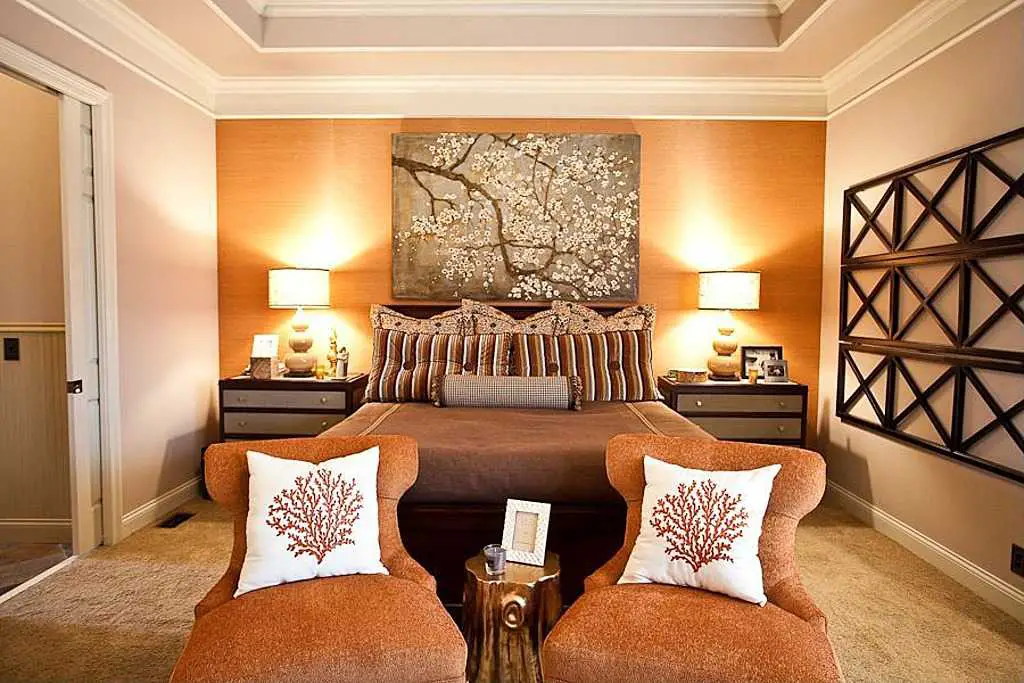
Conclusion
After carefully considering the question of which wall should be the accent wall in a bedroom, it is clear that there is no one-size-fits-all answer. The decision ultimately depends on various factors, including the room’s layout, the desired aesthetic, and personal preference. However, by taking into account some key considerations, individuals can make an informed decision that enhances the overall look and feel of their bedroom.
One important factor to consider when choosing an accent wall is the room’s layout. The wall that naturally draws attention or serves as a focal point can be an ideal choice for an accent wall. For instance, if there is a large window or a fireplace in the room. These features can be highlighted by painting the wall behind them in a contrasting color. By doing so, the accent wall not only adds visual interest but also complements the existing architectural elements of the room.
Another consideration is the desired aesthetic of the bedroom accent wall. Different colors evoke different emotions and moods, so it is essential to choose a color that aligns with the desired ambiance. For a calming and serene atmosphere, cool colors like blues and greens can be used. On the other hand, warm colors such as reds and oranges can create a cozy and inviting feel. By selecting a color that resonates with the desired mood. The accent wall can contribute to the overall ambiance of the bedroom.
Lastly, personal preference plays a significant role in determining the accent wall. It is essential to choose a wall that resonates with the individual’s taste and style. Some may prefer a bold and vibrant accent wall that adds a pop of color to the room. While others may opt for a more subtle and understated approach. By considering personal preferences, individuals can create a bedroom that reflects their unique personality and creates a space they truly enjoy.
The decision of which wall should be the accent wall in a bedroom is subjective and depends on various factors. By considering the room’s layout, the desired aesthetic, and personal preference, individuals can make an informed decision that enhances the overall look and feel of their bedroom. Whether it is highlighting architectural features, creating a specific mood, or reflecting personal style. The accent wall can be a powerful tool in transforming a bedroom into a visually appealing and inviting space.



